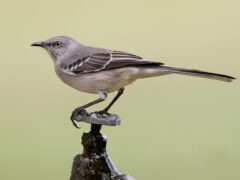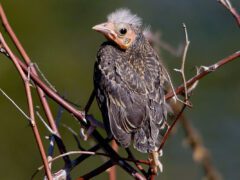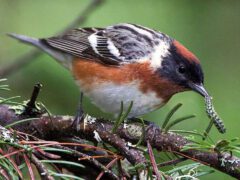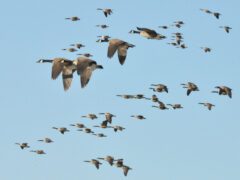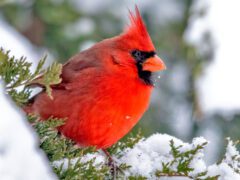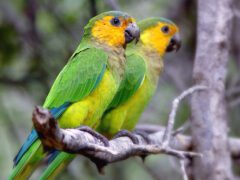Blue-winged Teal Similar Species Comparison
Main SpeciesBlue-winged Teal
Male
Most of the body is buffy colored with dense black speckles. Bluish-gray head with bold white crescent in front of eye, black bill, and black wings and rear.
© Dave Spier / Macaulay LibrarySouth Carolina, February 23, 2006Female
Coarsely marked brown body with darker cap and eyeline on the head, and black bill.
© Jay McGowan / Macaulay LibraryNew York, May 08, 2015Adult male and female/nonbreeding male
Forages in shallow water by dabbling, reaching underwater to grab aquatic vegetation, seeds, midge larvae, and other food items. Does not dive.
© Jay McGowan / Macaulay LibraryNew York, April 25, 2012Male
In flight the wings show green secondaries and powdery-blue shoulder patches.
© Jay McGowan / Macaulay LibraryNew York, May 08, 2016Male
Most of the body is buffy colored with dense black speckles. Bluish-gray head with bold white crescent in front of eye.
© Jay McGowan / Macaulay LibraryNew York, May 08, 2015Nonbreeding adult/immature
Often occurs in flocks, and in a variety of wetland habitats including flooded fields and shallow ponds.
© Chris Wood / Macaulay LibraryNew York, September 10, 2007Male (with Mallard)
Sometimes flocks with other duck species.
© Graham Gerdeman / Macaulay LibraryTennessee, January 10, 2019Nonbreeding adult/immature
In flight, all plumages show a powder-blue patch on the upperwing coverts.
© Bob Howdeshell / Macaulay LibraryTennessee, September 24, 2019Male
Occurs in wetland habitats including flooded fields and shallow ponds.
© K Novotny / Macaulay LibraryWisconsin, May 29, 2020Similar SpeciesCinnamon Teal
Breeding male
Male Cinnamon Teal have bright cinnamon heads and bodies and lack the white facial crescent on male Blue-winged Teals.
© Dorian Anderson / Macaulay LibraryCalifornia, January 21, 2017Similar SpeciesCinnamon Teal
Female/nonbreeding male
Cinnamon Teals have a warmer-toned and plainer face, whereas Blue-winged Teals have colder, gray tones. Cinnamon Teals also lack the white spot behind the bill that nonbreeding Blue-winged Teals have.
© Darren Clark / Macaulay LibraryIdaho, April 15, 2019Similar SpeciesNorthern Shoveler
Breeding male
Northern Shovelers are larger than Blue-winged Teals and have a white (not brown) breast.
© Dorian Anderson / Macaulay LibraryCalifornia, January 28, 2017Similar SpeciesNorthern Shoveler
Female/immature
Northern Shovelers are larger with a wider bill than Blue-winged Teals. The bill is also orangish (not black).
© Brendan Fogarty / Macaulay LibraryNew York, January 15, 2017Similar SpeciesGreen-winged Teal
Breeding male and female (American)
Green-winged Teals have a bright green speculum and do not show blue in the wings in flight like Blue-winged Teals.
© Chris Wood / Macaulay LibraryColorado, March 31, 2009Similar SpeciesGreen-winged Teal
Female/nonbreeding male
Female Green-winged Teals are darker brown, with a darker stripe through the eye and a darker cap than Blue-winged Teals. They also lack the white spot behind the bill that Blue-wined Teals have.
© Luke Seitz / Macaulay LibraryMaine, September 21, 2011Compare with Similar Species
Click on an image to compare
Species in This Family
Ducks, Geese, and Waterfowl(Order: Anseriformes, Family: Anatidae)
More to Read
Don't miss a thing! Join our email list
The Cornell Lab will send you updates about birds,
birding, and opportunities to help bird conservation.























































